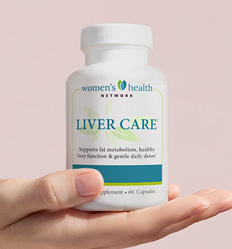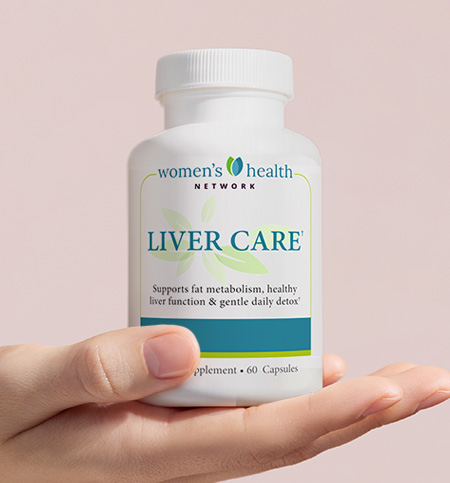Authored by Dr. Sharon Stills, NMD
Burning a scented candle can be one of life’s simple pleasures, but as growing research shows, it’s also one that can come with a surprising number of hidden health risks.

What’s really lingering beneath that fragrant scent? The unfortunate truth is that scented candles expose us to toxins linked to an array of health troubles – from headaches to asthma to hormonal imbalances to even increased risk for cancer.
As you make decisions about how to create a healthy home environment, especially during winter’s “candle season,” learn the alarming facts about toxins in scented candles — and get some easy tips for chemical-free ways to make your home smell great.
The problems with scented candles
Paraffin wax pollutes the air with toxic soot and hazardous VOCs
Long ago, candles were mostly made from natural compounds like animal tallow and beeswax. These days most mass-produced scented candles are made with paraffin wax, a petroleum waste byproduct that has been chemically bleached and deodorized. Paraffin is a problem because it releases hazardous air pollutants called volatile organic compounds (VOCs) when heated, including acetone, benzene and toluene. Exposure to these harmful toxins can trigger headaches; eye, nose and throat irritation; allergies; and even asthma attacks. These VOCs are also known carcinogens.
VOCs aren’t the only danger, however. Burning a paraffin wax candle releases ultrafine soot particles – a mixture of carbon, aerosolized chemicals and tar-like substances – that can remain suspended in the air for hours. According to a University of South Florida study, paraffin candle soot most closely resembles diesel vehicle exhaust in chemical composition with a mix of acetaldehyde, formaldehyde, dioxins and polycyclic aromatic hydrocarbons (PAHs). Due to their miniscule size, paraffin soot molecules easily penetrate the lungs where the toxins are absorbed into the bloodstream. In animal studies, exposure to chemicals in soot was linked to liver, brain and immune system damage, among other health issues. PAHs are classified by the EPA as probable human carcinogens.
Are soy and beeswax candles safer? Generally yes, but unless the candle is labeled 100% soy or beeswax, the candle wax could still be a paraffin blend. All burning candles produce soot. However, as a study published in the Journal of the American Oil Chemists’ Society found, soy wax and beeswax produce minimal soot compared to paraffin.
Stay away from synthetic fragrances
Scented candles can fill the room with pleasant smells, but this comes at the price of exposure to some pretty foul toxins. Among the worst offenders found in synthetic candle scents are phthalates, a class of manufacturing chemicals demonstrated to be endocrine disruptors and detrimental to human health.
As scented candles burn, phthalates are released into the air and can be inhaled or absorbed through the skin. Among their known effects, phthalates can exacerbate allergic symptoms and asthma, trigger migraines, damage liver function, and disrupt reproductive hormones, resulting in infertility and other hormonal imbalances. When you can still smell the candle hours later, it’s because compounds have stuck to our lungs and nasal passageways. They hang around and, as a result, more of these molecules get absorbed.
You might notice that some candles are labeled “phthalates free,” which is a start, but this does not cancel out all the other toxic synthetic fragrance chemicals still present, including the carcinogens benzophenone and styrene.
Pure essential oils don’t contain these toxins and can be a safer choice. However, the quality of the essential oil matters. An essential oil “blend” could be hiding artificial fragrances. Notably, manufacturers of scents can use the words “fragrance,” “perfume” and “essential oil” in their list of ingredients without specifying which chemicals are actually used to form the fragrance. Your best bet is to stick with candles made with only a single pure essential oil (e.g., only pure lavender essential oil). Even then beware that many people have sensitivity to fragrances – whether synthetic or completely natural.
A “drop in the ocean” that is already a sea of chemicals
If you’re wondering why scented candles are still on store shelves given these alarming health risks, it’s due to the worn-out defense that we just don’t get a large enough dose of toxins from candles to really need to worry about them. “It’s like dropping a teaspoon of chemicals into an Olympic-sized swimming pool and expecting it to change anything,” is a go-to comparison for this crowd.
Unfortunately, even the New York Times fell for this excuse in a recent article. However, the truth is we’re already swimming in a sea of chemicals thanks to all the other household products we use that contain synthetic fragrances, VOCs, phthalates and a laundry list of other harmful chemicals. Walking out the door exposes us to even more environmental toxins. These exposures add up — and are passed down from generation to generation. According to a study from the Environmental Working Group (EWG), 287 household and manufacturing chemicals have been detected in the umbilical cord blood of newborn babies.
To use a more accurate water analogy for understanding these dangers, lighting a scented candle may be more like adding that final drop to a glass of water before it spills over.
5 ways to scent your home without the scary toxins
There is nothing wrong with wanting to make your home smell nice — and the good news is there’s no shortage of natural methods to help you achieve that. Here are some of our favorite non-toxic ways to keep your home environment smelling fresh and clean.
Spray air with vinegar to deodorize. If you use scented candles in the kitchen to get rid of cooking smells after meals, try this vinegar spray as an alternative for neutralizing unwanted odors. Mix equal parts water and white vinegar in a spray bottle and mist the air. The vinegar will help eliminate unpleasant smells by breaking down and neutralizing the stinky molecules, literally pulling them from the air.
Stop masking unpleasant scents. If you use scented candles to minimize other less desirable smells in your living space, consider the root cause of the undesirable scents, such as a moldy basement or pet odors. The real solution might involve clearing the basement of damp items, remediating mold or investing in a good pet vacuum — all things that can decrease smells and increase the air quality of your home.
Simmer potpourri on the stove. Create your own natural potpourri by simmering a pot of water with aromatic ingredients such as citrus peels, cinnamon sticks and cloves. If you like to use scented candles as a form of aromatic self care, the delightful fragrance of a simmer pot is a good substitute.
Drip and fan essential oils or use diffusion sticks. Harness the natural fragrance of essential oils by dripping a few drops onto a hand fan. Gently waft the fan in the air to disperse the invigorating scents. You can also buy natural reed diffuser sticks. Soak with essential oils and then set out in a jar. As the oil evaporates it releases a gentle scent. Essential oils offer a wide range of options, from lavender for relaxation to lemon or grapefruit for invigoration. Stick with pure essential oils and skip the blends.
Ventilate your space. Ensure proper ventilation in your home by opening windows and doors regularly. Allowing fresh air to circulate helps disperse odors and improves overall air quality.
 | What are endocrine disruptors doing to your health? Learn more about the effects of everyday toxins on your hormones. |













